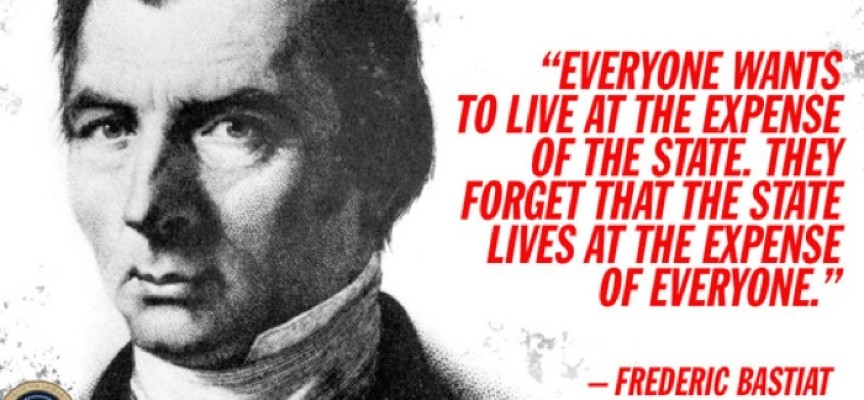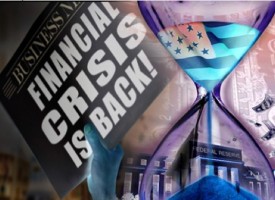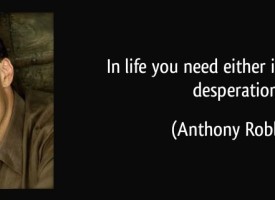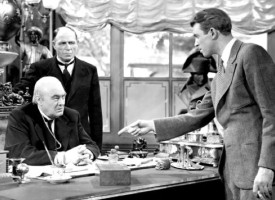Today King World News is featuring a piece by a man whose recently released masterpiece has been praised around the world, and also recognized as some of the most unique work in the gold market. Below is the latest exclusive KWN piece by Ronald-Peter Stoeferle of Incrementum AG out of Liechtenstein.
By Ronald-Peter Stoeferle, Incrementum AG Liechtenstein
August 5 (King World News) – What Is Seen And What Is Not Seen: The Fatal Consequences Of The Zero Interest Rate Policy
Three hundred years ago, Newton formulated his third law, also called the principle of action-reaction. It states: “Forces always appear in pairs. When one body A exerts a force on a second body B (action), the second body B simultaneously exerts a force equal in magnitude and opposite in direction on the first body A (reaction).”
In a dynamic economy, an action not only triggers just one effect, but always an entire series of different consequences.1 While the cause of the first effect is easily recognizable, the other effects often occur only later and no such recognition occurs. Frédéric Bastiat described this phenomenon in 1850 in his groundbreaking essay “What is Seen and What Is Not Seen”:2
“In the economic sphere, an act, a habit, an institution, a law produces not only one effect, but a series of effects. Of these effects, the first alone is immediate; it appears simultaneously with its cause; it is seen. The other effects emerge only subsequently; they are not seen; we are fortunate if we foresee them…
There is only one difference between a bad economist and a good one: the bad economist confines himself to the visible effect; the good economist takes into account both the effect that can be seen and those effects that must be foreseen. Yet this difference is tremendous; for it is almost always the case that when the immediate consequence is favorable, the later consequences are disastrous, and vice versa. Hence it follows that the bad economist pursues a small present good that will be followed by a great evil, while the good economist pursues a great good to come, at the risk of a small present evil.”
A similar phenomenon can be seen with the consequences of artificially suppressed interest rates and monetary stimulus: In the short term, they appear to have positive effects, but the long-term effects are disastrous and bear no relation to the advantages. If one studies these processes closely, it becomes clear that the underlying problems cannot be solved by global zero interest rate policy, but that this instead undermines the natural selection process of the market. Governments, financial institutions, entrepreneurs, and consumers, who should actually be declared insolvent, all remain on artificial life support.
In line with Bastiat's thoughts, numerous fatal long-term consequences of zero interest rate policies can be identified:3
► Conservative investors by nature come under increasing pressure with respect to their investments and take on excessive risks in light of the prospect that interest rates will remain low in the long term. This leads to capital misallocation and the emergence of bubbles.
► The sweet poison of low interest rates leads to massive asset price inflation (stocks, bonds, works of art, real estate).
► Structurally too low interest rates in industrialized nations due to carry trades lead to the emergence of asset price bubbles and contagion effects in emerging markets.
► Changes in human behavior patterns occur, due to continually declining purchasing power. While thrift is increasingly mutating into a relic of the past, taking on debt comes to be seen as rational.
► As a result of the structurally too low level of interest rates, a “culture of instant gratification” is created,4 which is among other things characterized by the fact that consumption is financed with credit instead of savings. The formation of wealth becomes steadily more difficult.
► The medium of exchange and unit of account function of money increases in importance, while its role as a store of value declines.5
► Incentives for fiscal discipline decline.
► Zombie banks are created: Low interest rates prevent the healthy process of creative destruction. Banks are enabled to roll over potentially non-performing loans practically indefinitely and can thus lower their write-off requirements.
► Distributive injustice (Cantillon effect): Newly created money is neither uniformly nor simultaneously distributed among the population. This results in a permanent transfer of wealth from later receivers to earlier receivers of newly created money.
Conventional monetary policy – this is to say the promotion of credit creation by lowering interest rates – reaches its limits once the “zero bound” is reached. To continue the spiral of stimulus, “unconventional monetary policy” becomes ever more important. The multitude of “newfangled” monetary policy measures is seemingly only limited only by the imagination of central bankers, whereby recent years have shown that central bankers can be extraordinarily creative. That this phenomenon is nothing new, is inter alia shown by this quote from 1922:
“But an increase in the quantity of money and fiduciary media will not enrich the world … Expansion of circulation credit does lead to a boom at first, it is true, but sooner or later this boom is bound to crash and bring about a new depression. Only apparent and temporary relief can be won by tricks of banking and currency. In the long run they must lead to an all the more profound catastrophe.” — Ludwig von Mises
Conclusion:
The seeds for the next crisis are already being sown. The longer the zero interest rate policy lasts, the greater risks investors will have to take, especially the ones who have certain return requirements. The point at which confidence in the fragile edifice of debt will be lost is difficult to forecast. We are strongly convinced that gold represents a sensible hedge against such a crisis of confidence.
1 Note: Carl Menger had already stressed causality in terms of economic laws, thus the very first sentence in his revolutionary work “Principles of Economics” is: “All things are subject to the law of cause and effect. This great principle knows no exception, and we would search in vain in the realm of experience for an example to the contrary.”
2 “Ce qu'on voit et ce qu'on ne voit pas”, Frédéric Bastiat
3 See: “In Gold we Trust“ 2014, p. 33-34
4 See: „Wenn Menschen zu Ratten werden“, Linus Huber („When men become rats“)
5 See: „Ein Staatsgeldsystem lädt Regierungen immer zum Betrug ein“, Hubert Milz, Ludwig von Mises Institut Deutschland (“A state money system always invites governments to commit fraud”)
***ALSO JUST RELEASED: Bill Fleckenstein – The Apple Nightmare, Silver, Gold, The End Of The Fed Fantasy, Plus A Bonus Q&A CLICK HERE.
© 2015 by King World News®. All Rights Reserved. This material may not be published, broadcast, rewritten, or redistributed. However, linking directly to the articles is permitted and encouraged.
The audio interviews with Bill Fleckenstein, Dr. Paul Craig Roberts, Robert Arnott, Eric Sprott, John Mauldin, Stephen Leeb, Egon von Greyerz, Nomi Prins, Gerald Celente, Andrew Maguire, Michael Pento, Rick Rule, David Stockman, Chris Powell, Dr. Philippa Malmgren, Marc Faber, Felix Zulauf and Rick Santelli are available now and you can listen to them by CLICKING HERE.








